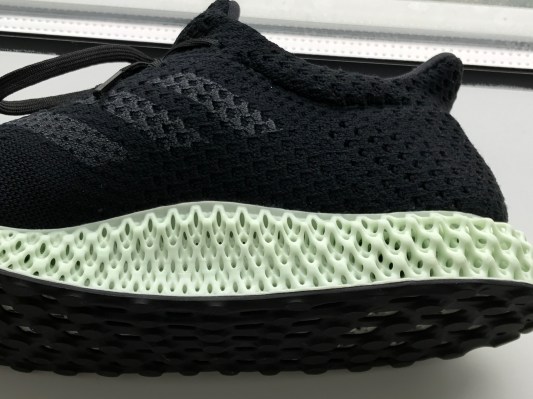In its three and a half years of existence, Carbon has become a leading light in the industry-wide push to bring 3D printing to manufacturing. The company’s proprietary CLIP tech has sped up the process of additive manufacturing by leaps and bounds. It’s also found the perfect partner in Adidas, whose Futurecraft 4D shoes are about as good a poster child for the tech as one could possibly ask for.
The Adidas partnership goes deep. Last month, the shoemaker’s supervillain-sounding investment wing Hydra Ventures helped the Bay Area-based company close a $200 million Series D, and now Adidas’ Executive Board Member Eric Liedtke is joining Carbon’s Board of Directors.
The news comes as Adidas’s 3D printed Futurecraft sneakers are finally set to go on-sale as a limited release in New York after what seems like years of hype. The sneakers run an only-kind-of-crazy $300 a pair, and offer what’s arguably the most compelling argument for 3D printing in manufacturing outside of the medical industry, where the tech has been applied to products like Invisalign.
Sneakers are a hell of a lot more exciting to most than retainers for most of us, and Carbon’s CLIP tech is able to do some impressive things that are much more difficult to accomplish through more traditional manufacturing. The real magic happens in the midsoles, which feature 20,000 struts, bring extra comfort and cushioning to the shoes.
When I spoke to Carbon CEO Joseph DeSimone late last year, he noted that the company was already pushing well beyond an initial limited run with the shoe, moving from 5,000 pairs to hundreds of thousands this year and potentially millions in the next. All of that’s being accomplished on a relatively small number of printers, meaning that an Adidas partnership isn’t the end-all, be-all of Carbon’s push.
It’s more of a proof-of-concept on a wide scale. And given the initial excitement around the shoes and the buddy-buddy relationship between the two companies, it seems like a safe bet that this is just the tip of the iceberg for the partnership and a push into truly mainstream (i.e. not $300) 3D printed footwear.
